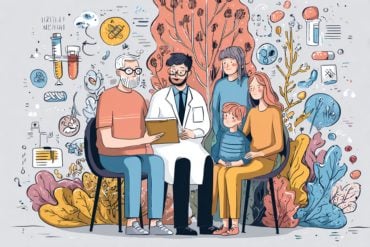Summary: A new gene therapy has restored vision in patients with Leber congenital amaurosis type I (LCA1), a rare genetic condition causing blindness. In a small trial, those receiving the highest dose saw up to a 10,000-fold improvement in light sensitivity and significant gains in reading and navigation abilities.
The therapy, developed by researchers, uses a virus-based system to deliver a functioning gene into the retina’s light-sensitive cells. The results show promise for expanding this treatment, with further trials planned to confirm safety and efficacy.
Key Facts:
- Gene therapy for LCA1 improved light sensitivity by up to 10,000-fold.
- Patients saw significant improvements in reading and navigating with the therapy.
- The treatment is expected to require just one dose per eye and last indefinitely.
Source: University of Florida
After the treatment, one patient saw her first star. Another saw snowflakes for the first time. Other patients were newly able to navigate outside of the home or to read the labels on their child’s Halloween candy.
The cause of these seemingly miraculous improvements? A gene therapy developed by University of Florida scientists, which restored useful vision to most patients with the rare, inherited blindness known as Leber congenital amaurosis type I, or LCA1, in a small trial.

Those who received the highest dose of the gene therapy saw up to a 10,000-fold improvement in their light sensitivity, were able to read more lines on an eye chart, and improved in their ability to navigate a standardized maze. For many patients, it was akin to finally turning on dim lights after trying to navigate their homes in the pitch black for years, the researchers said.
The trial also tested the safety profile of the treatment. Side effects were largely limited to minor surgical complications. The gene therapy itself caused mild inflammation that was treated with steroids.
“This is the first time that anyone with LCA1 has ever been treated, and we showed a very clean safety profile, and we also showed efficacy. These results pave the way for advancing the therapy in a phase 3 clinical trial and eventually commercializing it,” said Shannon Boye, Ph.D., chief of the Division of Cellular and Molecular Therapy at UF, co-author of the study and co-founder of Atsena Therapeutics, the UF spinoff that developed the gene therapy and funded the study.
“Atsena is pleased to advance the foundational work that Shannon and Sanford Boye developed in their laboratory many years ago and thrilled that the 12-month data from our ongoing clinical trial have been published in a prestigious medical journal,” said Kenji Fujita, M.D., chief medical officer of Atsena Therapeutics and co-author of the study.
“We look forward to sharing further results from this program as we continue progressing what has the potential to be a breakthrough in treating blindness in children and adults with LCA1.”
Shannon Boye, UF professor of pediatrics and Sanford Boye, associate scientist of pediatrics, and their collaborators at the University of Pennsylvania and Oregon Health and Science University published the results of the clinical trial Sept. 5 in the journal The Lancet.
LCA1 is rare. Only about 3,000 people have the condition across both Europe and the U.S. It is caused by having two defective copies of the gene GUCY2D, which is required for the light-sensitive cells in the eyes to function properly. People with the disease tend to have severely impaired vision that makes it difficult or impossible to drive, read, or navigate the world visually.
Shannon Boye has been developing the gene therapy targeting LCA1 for more than 20 years, since she enrolled as a graduate student at UF in 2001. In collaboration with her husband Sanford Boye, Shannon Boye’s lab developed the virus-based transport system that is essential for delivering functioning copies of the GUCY2D gene into the correct cells in the eyes. The Boyes founded Atsena Therapeutics in 2019 to bring the LCA1 treatment and other gene therapies to market.
“Most pharmaceutical companies are not interested in treating these rare diseases, because they are not strong revenue generators,” Sanford Boye said. “But we think these patients deserve attention, because we have treatments that work and provide really meaningful improvements to their quality of life.”
The study enrolled 15 subjects for treatment at the University of Pennsylvania or Oregon Health and Science University. Subjects received one of three different doses of the therapy to identify the safest and most effective dose for future trials. All patients received the treatment in one eye, which involved a surgical injection in the retina.
Researchers followed the patients for a year to test their vision in the treated eye compared to the untreated eye. Subjects who received higher doses saw greater improvements in their vision.
The researchers expect the gene therapy to last indefinitely, requiring just a single treatment per eye. So far, they have seen visual improvements last at least five years.
Broad access to the treatment will require approval by the FDA following a phase 3 clinical trial, which tests the therapy in a larger population of patients.
About this genetics and visual neuroscience research news
Author: Eric Hamilton
Source: University of Florida
Contact: Eric Hamilton – University of Florida
Image: The image is credited to Neuroscience News
Original Research: The findings will appear in The Lancet






